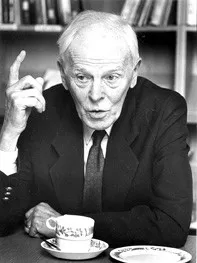Inge Edler and Hellmuth Hertz
Their pioneering work with ultrasound in the diagnosis of diseases of the heart
Department of Internal Medicine in Lund, 29 October 1953.
As usual, cardiologist Inge Edler was calm on the surface, but probably rather tense internally. It's the first time he's placing a bulky ultrasound sensor on the chest of a cardiac patient. Beside him was physicist Hellmuth Hertz. He eagerly adjusted the amplification, his gaze fixed on the oscilloscope screen watching the wave-shaped movements as they kept pace with the heartbeat.
The equipment was borrowed from Siemens. To make it practical for cardiac diagnostics, Hertz had it modified at the workshop of the Department of Physics to enable it to record ultrasound echoes photographically. Edler and Hertz were not at all concerned that the method could be harmful – good researchers as they were, they tried the device on themselves first. The excitement lay in whether they would be able to see how a diseased heart behaves. The recording was successful and a new era in cardiac diagnostics was dawning.
The originators, Inge Edler, 42, and Hellmuth Hertz, 36, had known each other for less than six months. The initiative came from Edler. His problem was how to obtain a correct diagnosis for certain heart defects, which at that time had become surgically correctable. Edler had been in touch with Hertz, wondering whether it was possible to use radar. Hertz, a graduate student at the Department of Physics at the time, rejected this idea, but countered by suggesting that it might be possible to use ultrasound and its reflexions.
Inge Edler and Hellmuth Hertz happily flanking the poster on the 1977 symposium on Echocardiography in the University Hospital in Lund.
Hertz came from a famous family of physicists; his father was a Nobel laureate and the unit representing frequency, the hertz, which we still use today, was named after his great uncle. Edler had worked as an internist for a long time, first in Malmö for a few years, and then in Lund; he was particularly interested in cardiac disease. Both were remarkable men. Hertz was an all-round physicist who was fascinated by biology. He founded the subject medical engineering in Lund and Malmö. Edler was interested in agriculture; he was also a professional magician.
The principle for echocardiography is as follows. The vibrations in a piezoelectric crystal create a beam of high frequency sound waves that are transmitted into the chest. When the waves pass an interface, such as between the heart wall and the surrounding area or the surface of a cardiac valve, some of the sound is reflected, creating an echo. The crystal is reset, enabling it to receive the echo. The longer it took for the echo to return to the crystal, the longer the distance between the crystal and the surface that was the source of the echo. The principle was the same as for sonar, used to measure the depth of water under a vessel, only in this case you measure the distance from the structure that is the source of the echo to the chest wall.
The first echocardiographical recordings waves were not too impressive and many cardiologists did not think the method was worth pursuing. But echocardiography would soon spread triumphantly around the world. With a special modification – Doppler technology – you could measure the speed and direction of blood flow in the heart and the major vessels. Now doctors can reproduce the heart and its valves in three-dimensional images and even express an opinion on the composition of the tissue. Ultrasound, now a routine procedure, was as revolutionary as the ECG. Today there are no fewer than three medical journals devoted to ultrasound in the field of cardiology.
The very first recording of the ultrasound echo from the heart.
Inge Edler and Hellmuth Hertz were nominated on multiple occasions for the Nobel Prize, but had to be satisfied with the next best thing - the US Lasker prize. Inge Edler was voted the foremost Swedish cardiologist of the century. Edler received Lund's Fernström Prize in 1991. Hertz was already deceased at that time.
Text: Håkan Westling
Cardiologist Inge Edler.
